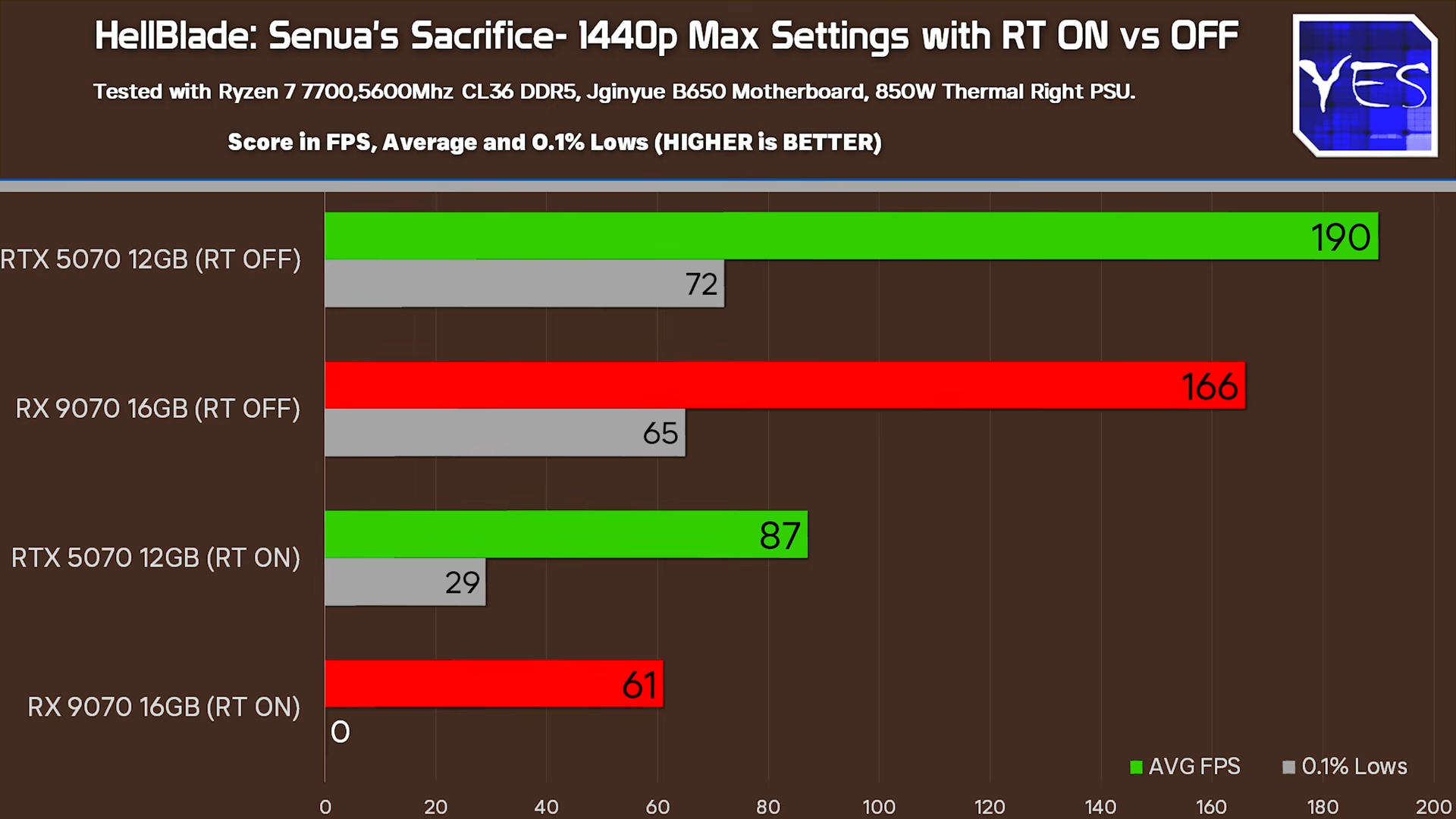Recent Reddit reports discovered AMD’s latest RX 9000 series GPUs are prone to severe stuttering issues in Unreal Engine 4 games with ray-tracing. YouTuber Tech Yes City published a deep dive on the subject, revealing that the issue is not entirely AMD-centric — as some reports have implied. Intel’s Arc B580 also suffers from similar stuttering problems.
The YouTuber tested two ray-traced supported Unreal Engine 4 games on an RX 9070 16GB, an Arc B580 12GB, and an RTX 5070 12GB — The Ascent and Hellblade: Senua’s Sacrifice (not to be confused with Hellblade 2). Tech Yes City discovered that The Ascent suffered substantial stuttering on the RX 9070, providing an average of over 60 FPS but yielding 0 FPS 1% and 0 FPS 0.1% lows. He also discovered that Nvidia GPUs suffer from other problems in the game.

Watch On
His RTX 5070 had artefacting issues, which caused The Ascent to run with black bars at the top of the screen. Strangely, this behavior only occurred when running the game at native resolution; turning on DLSS rectified the problem. Additionally, both the RTX 5070 and RX 9070 suffered from severe performance drop-offs when ray tracing was turned on in The Ascentwith frame rates plummeting by around 3x. (That is a level of performance drop-off similar to path-traced enabled titles.)
Hellblade: Senua’s Sacrifice also exhibited stuttering issues on the RX 9070; however, stuttering was also an issue on the Arc B580. The RX 9070 performed at around 45 FPS average, but suffered from 0 FPS 1% and 0.1% lows. The B580 was capable of the same 45 FPS average but also suffered from terrible 8 FPS 1% and 0.1% lows, causing large stutters.
Performance dropped off a cliff when ray tracing was turned on, just like in The Ascent, on the RTX 5070 and RX 9070. This is probably the only reason the Arc B580 was able to pump out average frame rates similar to those of the RX 9070. (The Arc B580 is a significantly weaker GPU, in a much lower price class.)
Both games use a proprietary version of UE4 built by Nvidia
Tech Yes City also discovered that both games run off of an Nvidia RTX branch of Unreal Engine 4, featuring Nvidia-specific ray-tracing technologies tailor-made for Nvidia GPUs. This is different from the vanilla branch of Unreal Engine 4, which has its own set of proprietary ray tracing technologies that are based on DXR, not NvRTX.
We wish other Unreal Engine 4 games, ones based on the vanilla build of the engine and not Nvidia’s proprietary version, were tested to see if the stuttering issues existed on the Intel Arc GPUs in those games. But, at the very least, it seems Nvidia’s branch of Unreal Engine 4 is to blame for performance problems on both AMD and Intel GPUs when ray tracing is turned on, rather than any potential driver issues on AMD’s side, specifically.








